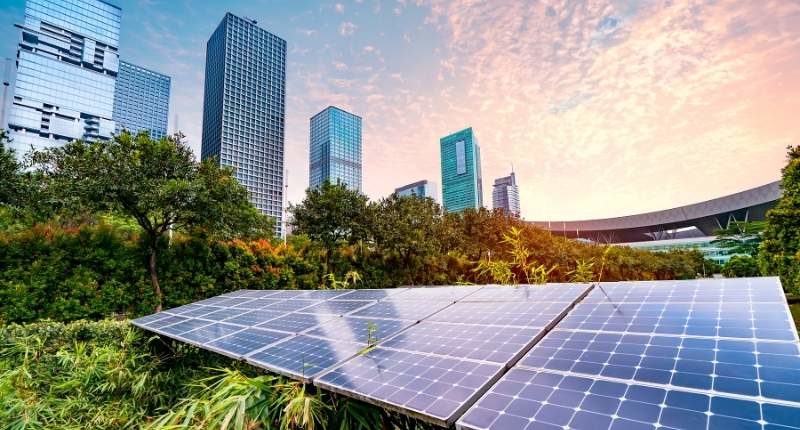- Industrial construction has soared last year due to demand for logistic spaces
- With the Glasgow conference last year, more attention has been brought to sustainability across all facets of developments
- Hansen Yucken has adopted a new range of sustainable features across all of its projects
Given last year’s United Nations Climate Change Conference in Glasgow and the federal government’s 2050 net-zero targets, industry leaders across the property and construction sectors are pledging to reduce their environmental impact this year.
Goodman Group announced last year it achieved its goal of carbon neutrality – four years ahead of schedule. Mirvac has also announced it has achieved net positive carbon for scope 1 and 2 emissions nine years ahead of their 2030 target.
The industrial construction industry in particular will seek to reduce its footprint given the eCommerce boom which fuelled demand for logistics assets.
Hansen Yucken, an Australian owned and operated construction company, saw a 150% year-on-year increase in industrial workload last year.
Peter Salveson, Hansen Yuncken CEO, said the increase in such projects creates major opportunities for the sector to gravitate towards more sustainable and forward thinking developments.
“The majority of projects delivered by Hansen Yuncken have been distribution centres, specialised storage warehouses, temperature controlled facilities, manufacturing alongside a number of speculative projects for future tenants,” said Mr Salveson.
“COVID has certainly influenced clients to think differently in respect to design and user experience of our facilities.
“We work collaboratively with developers and clients to adopt innovative systems and processes to help facilitate industry-wide use of emerging – technologies such as online communication and inspections, design portals and quality management.
Peter Salveson, Hansen Yuncken CEO
“While there hasn’t been a dramatic change in the look of these buildings, we have observed a very noticeable shift toward more sustainable work practices and environments. Workplaces are changing to make the workplace a better place to be.”

An example of such a project includes Hansen Yucken’s Frasers Williams-Sonoma Logistics Facility in New South Wales. The 17,975sqm project sought a 5-star Green Star Rating – something which is becoming more prevalent across industrial facilities.
Additionally, with Frasers, Hansen Yuncken also delivered the 6-Star Green Star rated facility for Ceva in Trugania. This consists of a 30,000sqm warehouse for Ceva arts and stock.
Environmental features include the incorporation of solar generation, water reuse and minimisation, energy monitoring and interior comfort which increased through the use of thermal comfort, efficient commissioning and material selectivity.
Additionally, the 25,000sqm HFA Heathwood Meat Processing Facility has been constructed to facilitate the online food delivery industry. The facility features Australia’s second-largest rooftop photovoltaic solar system, which provides around 50% of the asset’s energy requirements.
“The inclusion of solar installation across industrial sites played a huge part in Australia meeting its 2020 Renewable Energy Target, which was to ensure at least 33,000 gigawatt-hours (GWh) of Australia’s electricity comes from renewable sources, a year ahead of schedule,” added Mr Salveson.
“The larger end of the two-pronged target required high-energy users to acquire a certain proportion of energy from renewable sources. Ensuring industrial developments have renewable sources of energy is integral in Australia’s move toward a greener future.”
High demand for larger projects
Mr Slaveson concluded by remarking that there is a steady, strong pipeline of industrial projects, especially in projects ranging from 15,00sqm to 80,000sqm.
“Over the past five to ten years, large industrial precincts have emerged in the Western suburbs of Sydney due to the proximity of transport networks, both existing and developing,” he explained.
However, looking forward, the location of these facilities are to be located across the outer metropolitan areas of Sydney and Melbourne.
“Even as pandemic restrictions ease, we expect the demand for industrial facilities to continue to rise. People have turned to online shopping, to name one industry as an example, and they aren’t turning back.
“Our job is to ensure this rise in demand is married with a continued focus on environmentally sustainable practice. Protecting our planet is always front of mind, and we look to deliver that in every project we undertake.”








